Bright terry and semi-terry baskets of flowers of various colors instantly captivate the hearts of gardeners. Perennial zinnia, cultivation and care in the open field for which does not take much effort, is a drought-resistant plant with a long flowering period. Among the people, zinnias are known as majors.
Material Content:
Growing perennial zinnia from seeds
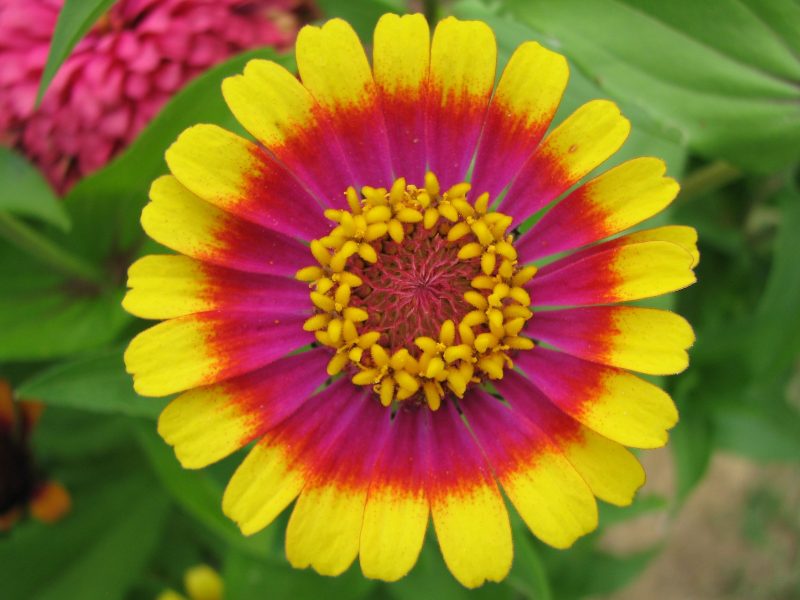
In a culture, it is possible to grow only 4 varieties of zinnia from more than 20 known - elegant, narrow-leaved. fine-flowered and linearis. Perennial representatives, similarly to annuals, reproduce in a generative way. In regions with mild climatic conditions without the risk of return frosts, seeds can be sown immediately in the garden. However, according to experts and experienced gardeners, the cultivation of zinnia from seeds is best done by the seedling method.
Sowing seeds in the ground
To surely exclude the risks during sowing associated with night frosts, sowing is carried out in late May-early June.
The steps are taken as follows:
- A week before the planned sowing, the seeds are wrapped with tissue soaked with a growth stimulator.
- Germinated seed is sown in holes, the depth of which does not exceed 4 cm, in a pre-prepared area and an interval of 20 cm.
- After half a month, the first shoots are poked.
Planting seeds for seedlings
Due to intolerance of frost zinnia by young plants - a temperature of -1 ° C will destroy seedlings - the seedling method of flower cultivation is the most productive.
To do this, at the end of March:
- The seed is wrapped in a gauze impregnated with a stimulant for germination to avoid seeding of non-germinating seeds.
- Hatching seeds of 2-3 pieces are sown in pots filled with peat to a depth of 1 cm.
- The containers are humidified and move the room with good lighting.
- At temperatures between 22-24 ° C, the first sprouts appear after a few days.
- The root system in young seedlings is formed rapidly, so when the seedlings are pulled, soil is added to the pots.
- Before planting in open ground, seedlings are tempered by moving it in the daytime to fresh air.
Important! Since zinnia has poor tolerance to picking, sowing seeds for seedlings is not too dense.
Planting zinnia in the open ground
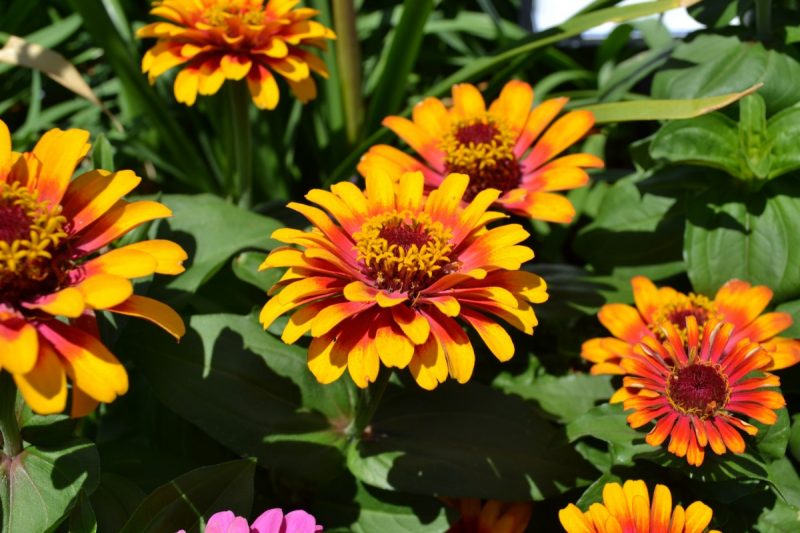
Before proceeding with the preparation of seed or forcing seedlings, it is necessary to study all the preferences of zinnia: soil composition, lighting, temperature. Only if all agrotechnical requirements are observed, flower growers will get the desired result in the form of lush flowering zinnias of wondrous beauty.
Site selection and soil preparation
Choosing a site for growing zinnias is a fairly simple task: a drought-resistant plant can be cultivated even in those areas where moisture access is limited. Majors can grow alone, while coexisting fine with their neighbors in the form of other flower cultures. The most optimal place will be sunny areas, protected from the wind, which can damage the decorative flower.
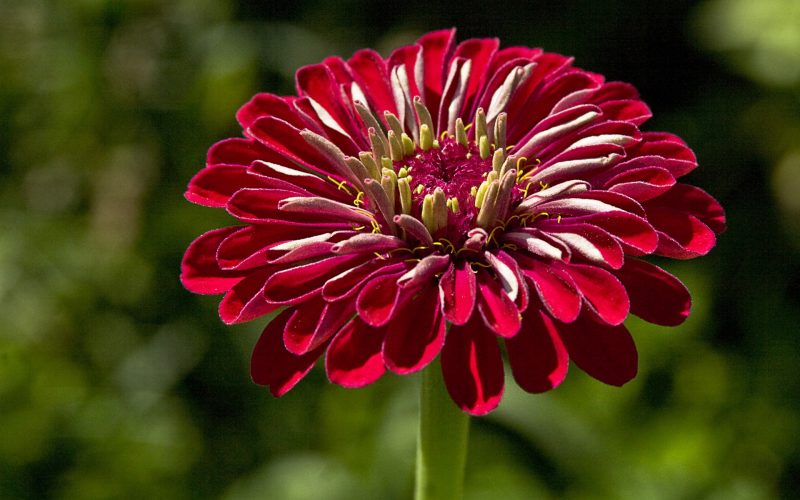
Majors, easily tolerating drought, negatively relate to the high level of occurrence of groundwater and waterlogging of the soil. To avoid rooting, the soil is drained with expanded clay and sand. The soil for successful cultivation must be fertile or enriched with nutrients in advance: during autumn digging, 8-10 kg of compost per 1 m2 are applied to the selected area, and in the spring - complex mineral fertilizers. Also, zinnia will be grateful for the preparation of a special loose substrate from sheet soil, sand and humus.
How and when to plant zinnia?
If the sowing of seeds directly into the soil described above is carried out at the end of spring or early summer, then the time for planting seedlings also falls at this time.

- The plot prepared in the fall is cleared of weeds.
- Hardened seedlings are planted by transshipment or in peat pots at a distance of 30-35 cm between specimens, so that the plants have enough space to build up green mass.
Attention! If all the actions were performed correctly, in the midst of summer the gardener will be pleased with the first flowers.
Perennial Zynia: outdoor care
Despite the unpretentiousness of the representative of Astrov, zinnia needs a comprehensive and systematic careproviding for the implementation of a number of activities.
Watering and loosening
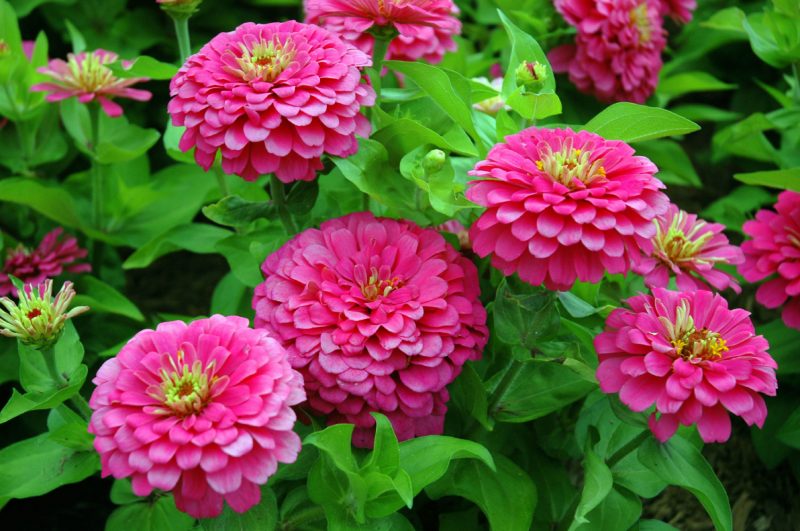
Culture does not require frequent watering. In this case, the frequency of humidification should be replaced by a large volume of water. When watering, you should minimize the possibility of water getting on the peduncle, which can provoke the process of decay. If, for reasons independent of the grower, for example, due to rain, the inflorescences are still affected, they should be removed to prevent the development of rot. After drying, the soil loosens so that a crust does not form, which has a negative effect on the ability of zinnia to form flowers.
Attention! Moisture deficiency over a long period can also affect the condition of the plant: small flowers form, the tips of which dry out during flowering.
Top dressing

When the majors are in a depressed state, which is confirmed by an inferior development, yellowing of the green mass, the plant is fed with complex mineral fertilizers in the form of nitroammophos, superphosphate and potassium sulfate with a rate of one tablespoon each per 1 m2. In specialized stores you can buy liquid complexes that are used for irrigation in the concentration indicated on the package, providing the necessary growth, splendor and duration of flowering, as well as resistance to the development of diseases.
How to pinch zinnia?
Tsiniya pinch only when the florist wants to get a shrubbery plant. The procedure is carried out at the stage of development of the fourth pair of true leaves.
Winter Care Features
Due to intolerance to cold weather conditions, cynium is cultivated as an annual plant. But when planting it in a container, it is possible to transfer the flower to a warm room and grow it in room conditions as a perennial culture.
How to collect seeds?
When self-collecting seeds, it should be borne in mind that seeds from first-order shoots have the highest sowing qualities.
In order to collect seeds correctly, you must follow the basic recommendations:
- Selected specimens leave only first-order shoots.
- In plants for harvesting seeds, the beginning of flowering is noted, which serves as a starting point for counting the two-month period during which the seeds ripen.
- When the baskets become brown, they are separated, dried and peeled.
- The seeds obtained are stored in a place without temperature differences for three years, while maintaining all the sowing qualities.
Diseases and pests of zinnia
Tsiniya, along with other flower crops, is affected by diseases and pests.
Disease
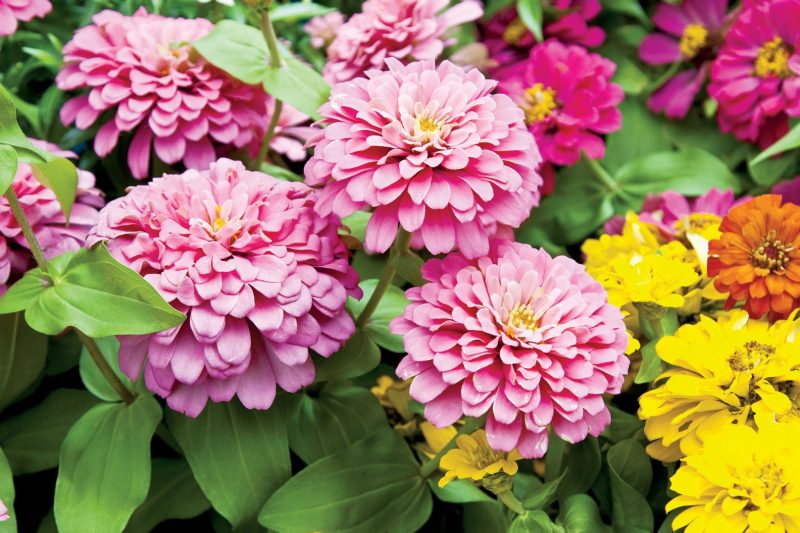
Majors are affected by fungal and bacterial diseases, among which the most dangerous are:
- bacterial spotting;
- Fusarium
- gray rot;
- powdery mildew.
With manifestations of spotting, the affected parts are subject to immediate destruction, and with strong development, the entire plant is eliminated: the disease, due to its bacterial nature, cannot be treated. Fungal diseases are treated by double treatment of plantings with a fungicidal preparation with a time interval of 10-14 days, depending on the period of toxicity of the drug.
Advice! If a disease occurs, you should find out the reason, most often lies in violations of the rules of care, in order to avoid such errors later.
Pests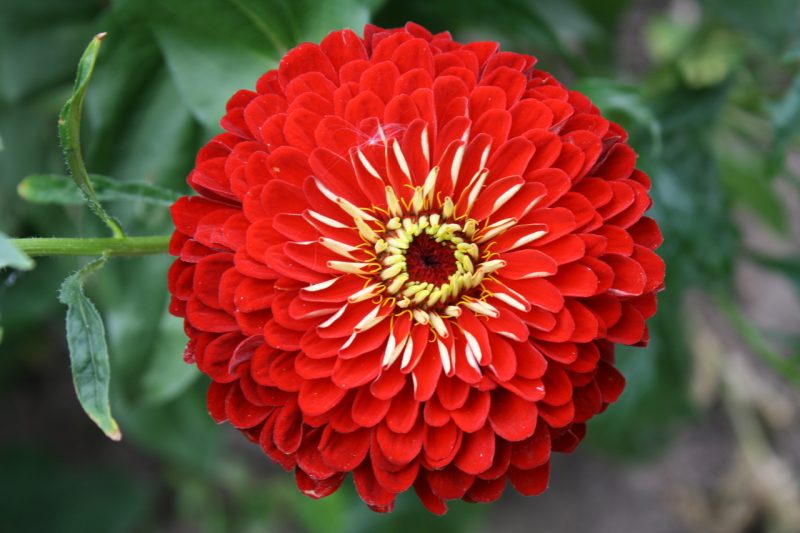
The most common crop pests are:
- aphid - a soap solution or spraying with an insecticidal preparation is used to protect the plant from settling by these insects;
- slugs - gastropod pests require mechanical destruction.
- May bugs - collected by hand and dumped into a bucket of soapy water.
Thus, if you know the nuances of growing zinnia and correctly carry out care measures, the grower will certainly be rewarded with beautiful and lush flowers.












